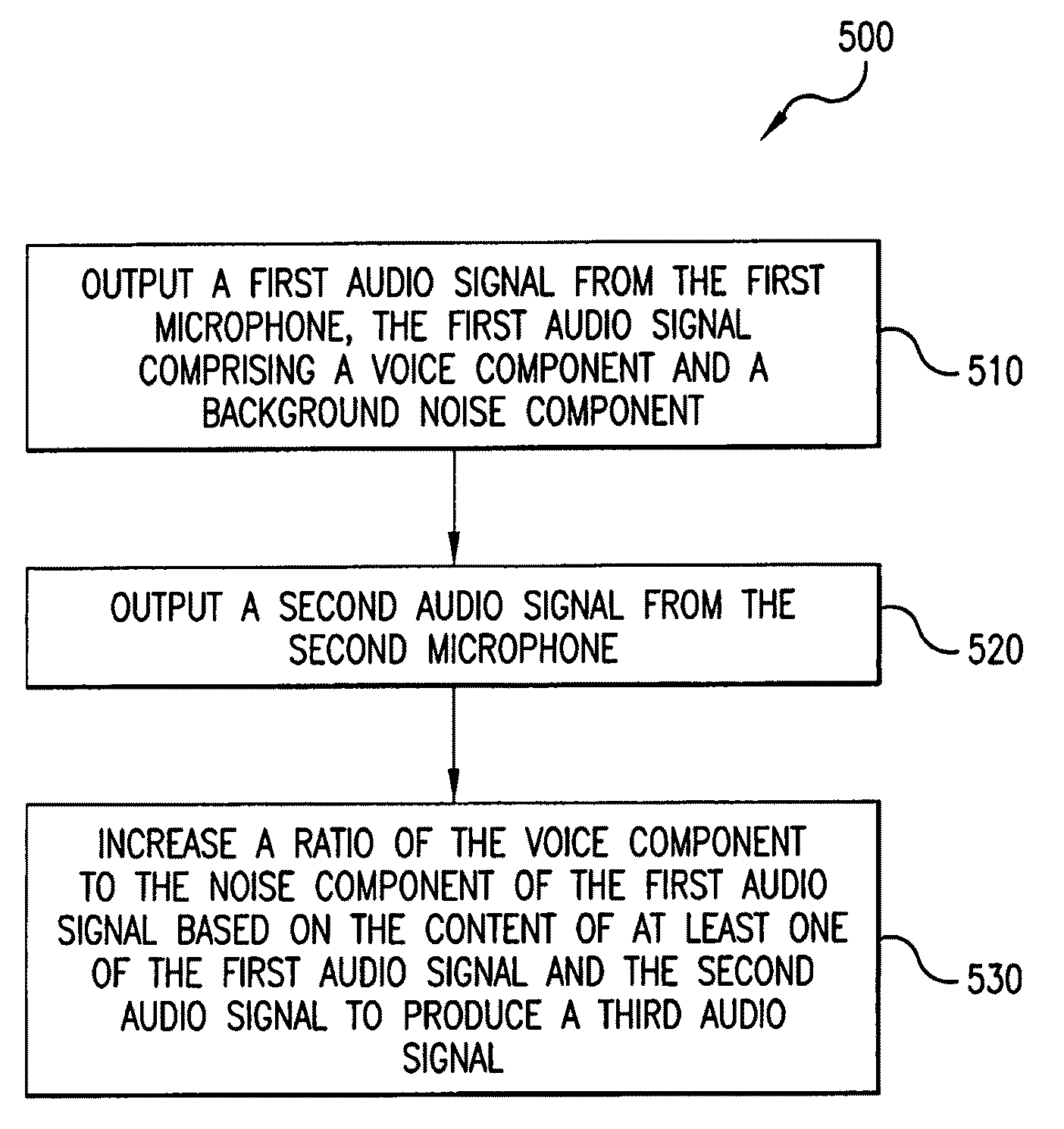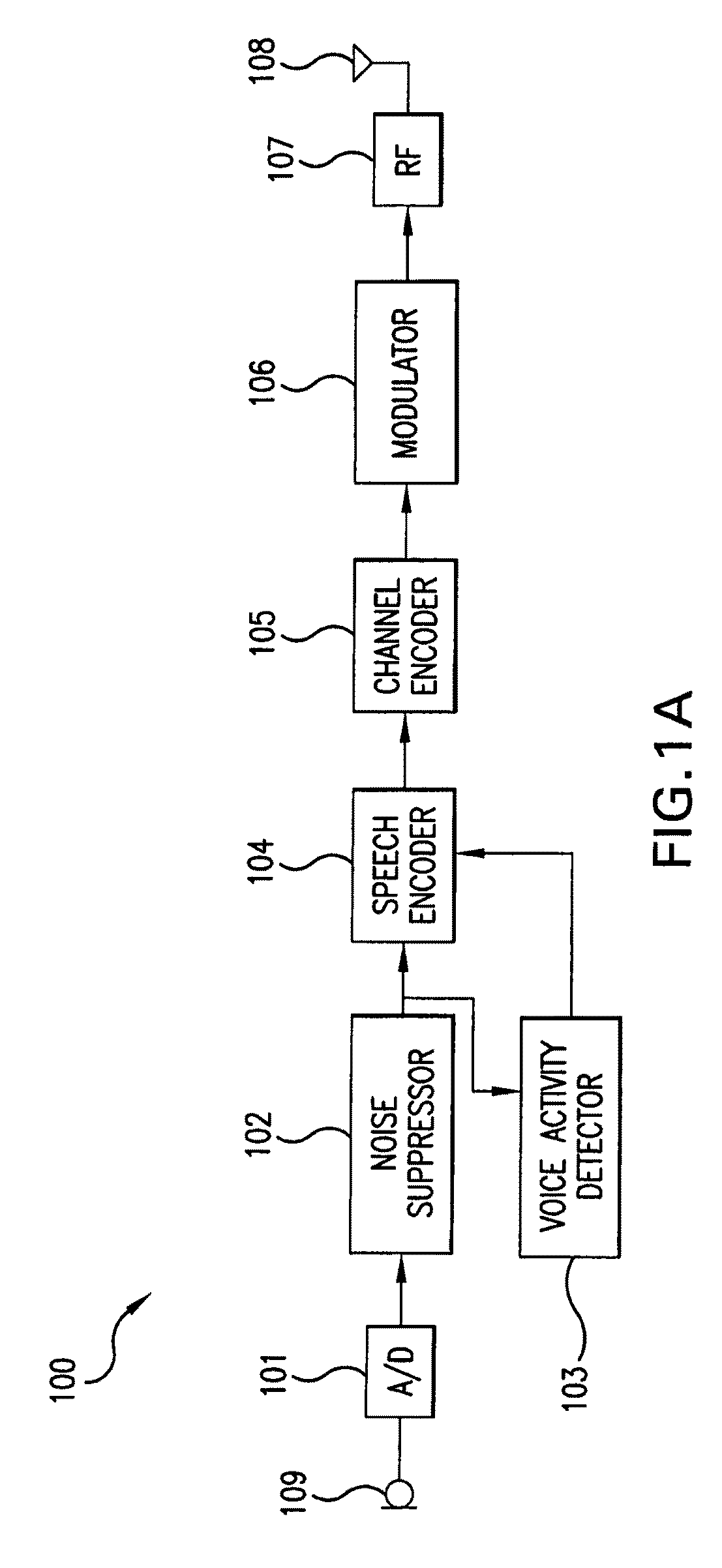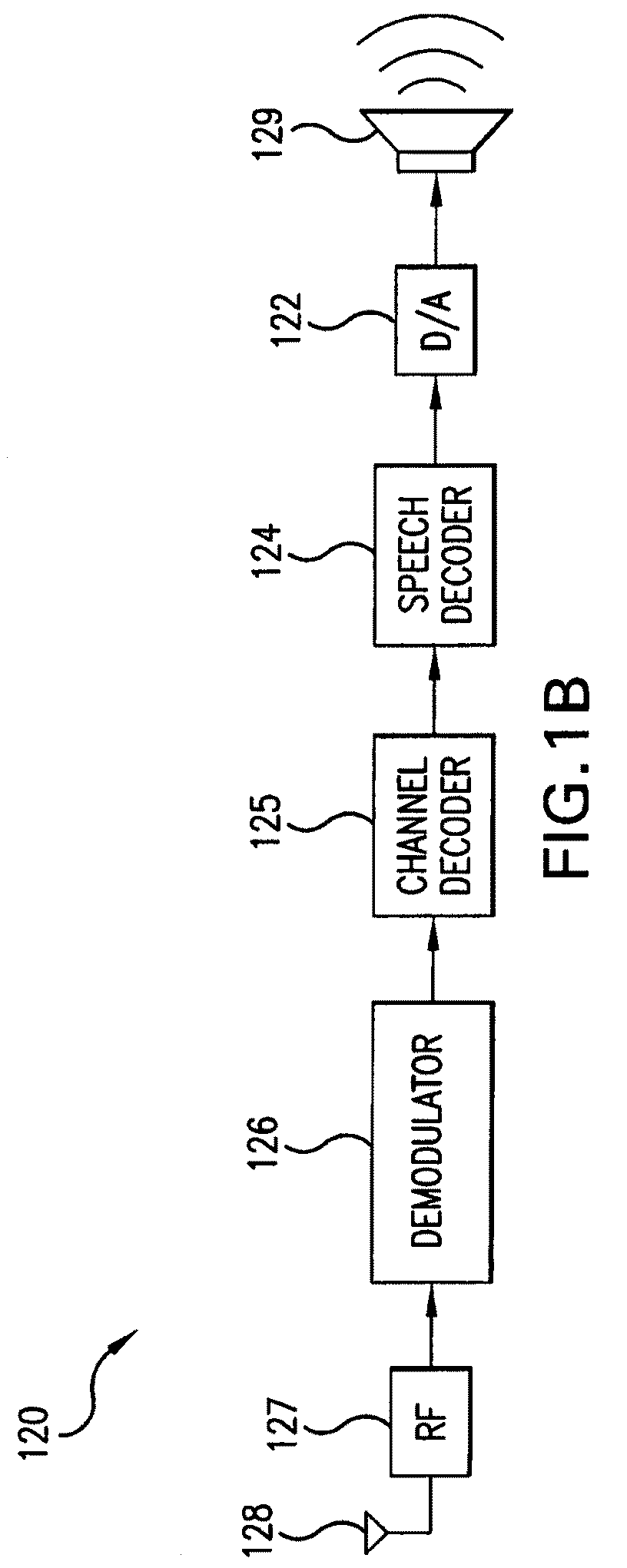Speech intelligibility in telephones with multiple microphones
a technology of speech intelligibility and microphones, applied in the field of telephones, can solve the problems of difficult differentiation of inability of far-end users to decipher desired voice components against embedded background noise components, and inability to distinguish voice components from background noise components, etc., to achieve the effect of improving speech intelligibility and improving speech intelligibility
- Summary
- Abstract
- Description
- Claims
- Application Information
AI Technical Summary
Benefits of technology
Problems solved by technology
Method used
Image
Examples
example embodiments
B. Example Embodiments
[0208]As mentioned above, a multiple-description transmission system in accordance with an embodiment of the present invention transmits multiple versions of the channel encoded digitized bits. For example, FIG. 25 illustrates multiple signals 2550A-B being transmitted between first wireless telephone 2510 and second wireless telephone 2520. An embodiment of the present invention can use redundancy in the multiple versions to improve channel decoding. In another embodiment, redundancy in certain parameters of speech can also be used to improve channel decoding.
[0209]In U.S. Patent Application Publication Number 2006 / 0050813, “Method and System for Decoding Video, Voice, and Speech Data Using Redundancy,” by A. Heiman and M.-S. Arkady, a method is described where the physical constraints of a speech signal, such as the continuity of certain speech parameters (e.g. gain, pitch period, and line spectrum pairs (LSPs), etc.) from frame to frame, are used to help ide...
PUM
 Login to View More
Login to View More Abstract
Description
Claims
Application Information
 Login to View More
Login to View More - R&D
- Intellectual Property
- Life Sciences
- Materials
- Tech Scout
- Unparalleled Data Quality
- Higher Quality Content
- 60% Fewer Hallucinations
Browse by: Latest US Patents, China's latest patents, Technical Efficacy Thesaurus, Application Domain, Technology Topic, Popular Technical Reports.
© 2025 PatSnap. All rights reserved.Legal|Privacy policy|Modern Slavery Act Transparency Statement|Sitemap|About US| Contact US: help@patsnap.com



